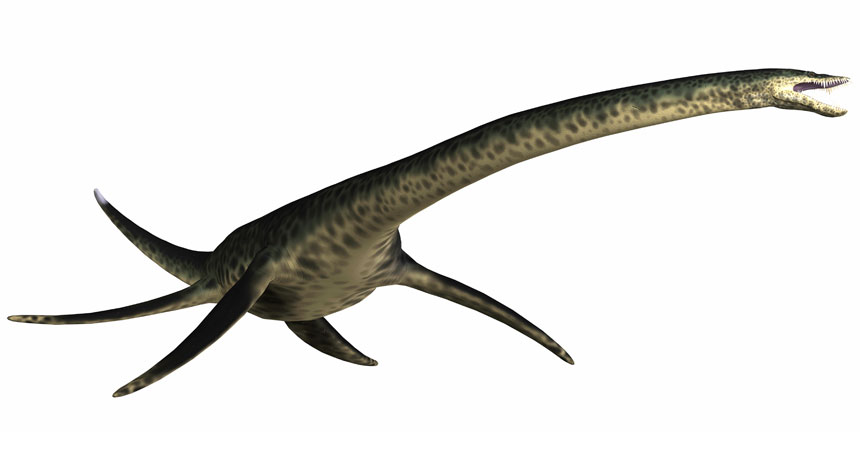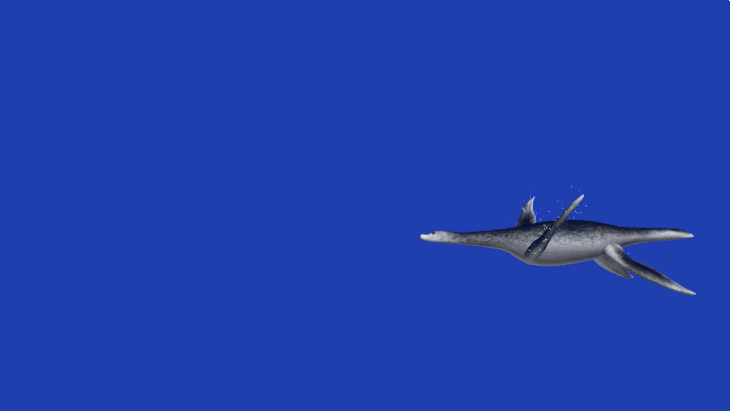Picture This: Plesiosaurs swam like penguins
New study shows the creatures used front flippers for power and back flippers for steering

For nearly two centuries, scientists have argued about how plesiosaurs used their four flippers to maneuver underwater. New computer analyses appear to settle the debate.
CoreyFord/iStockphoto
In 1823, fossil hunter Mary Anning discovered the first complete skeleton of a plesiosaur. That’s a type of ancient marine reptile. Her find led to more than 190 years of arguing. Some experts claimed the long-necked sea beast used its four flippers like the oars of a boat. Others argued that the flippers flapped through the water like bird wings.
Experiments with robots and even humans wearing plesiosaur-like flippers only fanned the flames. Now, a new computer model may finally lay the flap to rest.
Computer scientist Greg Turk of Georgia Tech in Atlanta and coworkers did the research. They ran thousands of computer simulations to imitate plesiosaurs swimming underwater. They wanted to find the limb motion that could best propel the creatures forward.
Plesiosaurs didn’t flap with all their flippers, that new work now suggests. And they didn’t rely only on their rear flippers to swim, either. Instead, they used the two pairs of flippers for different purposes. They powered ahead with their two front flippers. They used the two back ones like a boat’s rudder. These steered them and kept them stable in the water. That swimming motion is similar to the underwater stroke penguins use today, the scientists report.
The team shared their findings online December 18 in PLOS Computational Biology.

Power Words
(for more about Power Words, click here)
computer model A program that runs on a computer that creates a model, or simulation, of a real-world feature, phenomenon or event.
computer science The scientific study of the principles and use of computers. Scientists who work in this field are known as computer scientists.
fossil Any preserved remains or traces of ancient life. There are many different types of fossils: The bones and other body parts of dinosaurs are called “body fossils.” Things like footprints are called “trace fossils.” Even specimens of dinosaur poop are fossils. The process of forming fossils is called fossilization.
marine Having to do with the ocean world or environment.
plesiosaur A type of extinct marine reptile that lived at the same time as dinosaurs and is noted for having a very long neck.
reptile Cold-blooded vertebrate animals, whose skin is covered with scales or horny plates. Snakes, turtles, lizards and alligators are all reptiles.
simulate To deceive in some way by imitating the form or function of something. A simulated dietary fat, for instance, may deceive the mouth that it has tasted a real fat because it has the same feel on the tongue — without having any calories. A simulated sense of touch may fool the brain into thinking a finger has touched something even though a hand may no longer exists and has been replaced by a synthetic limb. (in computing) To try and imitate the conditions, functions or appearance of something. Computer programs that do this are referred to as simulations.







